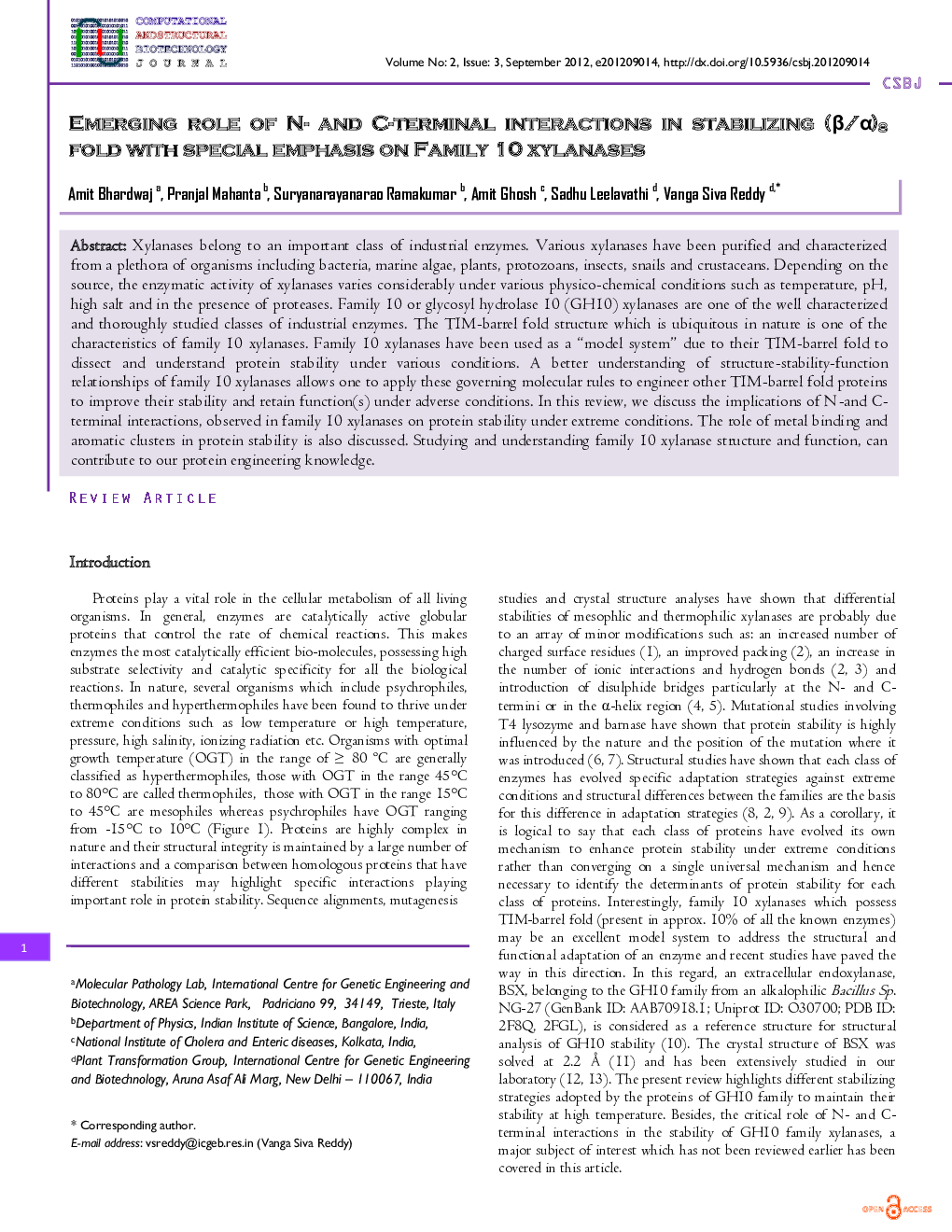| کد مقاله | کد نشریه | سال انتشار | مقاله انگلیسی | نسخه تمام متن |
|---|---|---|---|---|
| 2079387 | 1079865 | 2012 | 10 صفحه PDF | دانلود رایگان |

Xylanases belong to an important class of industrial enzymes. Various xylanases have been purified and characterized from a plethora of organisms including bacteria, marine algae, plants, protozoans, insects, snails and crustaceans. Depending on the source, the enzymatic activity of xylanases varies considerably under various physico-chemical conditions such as temperature, pH, high salt and in the presence of proteases. Family 10 or glycosyl hydrolase 10 (GH10) xylanases are one of the well characterized and thoroughly studied classes of industrial enzymes. The TIM-barrel fold structure which is ubiquitous in nature is one of the characteristics of family 10 xylanases. Family 10 xylanases have been used as a “model system” due to their TIM-barrel fold to dissect and understand protein stability under various conditions. A better understanding of structure-stability-function relationships of family 10 xylanases allows one to apply these governing molecular rules to engineer other TIM-barrel fold proteins to improve their stability and retain function(s) under adverse conditions. In this review, we discuss the implications of N-and C-terminal interactions, observed in family 10 xylanases on protein stability under extreme conditions. The role of metal binding and aromatic clusters in protein stability is also discussed. Studying and understanding family 10 xylanase structure and function, can contribute to our protein engineering knowledge.
Journal: Computational and Structural Biotechnology Journal - Volume 2, Issue 3, September 2012, Pages 1–10